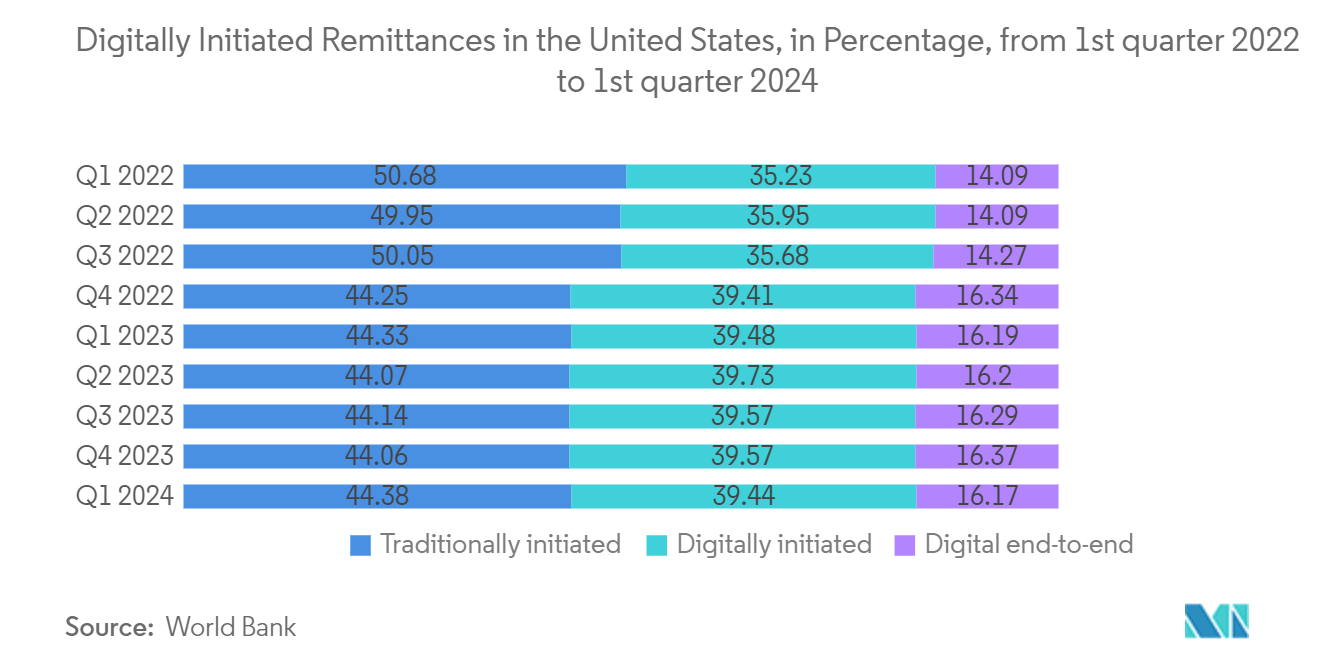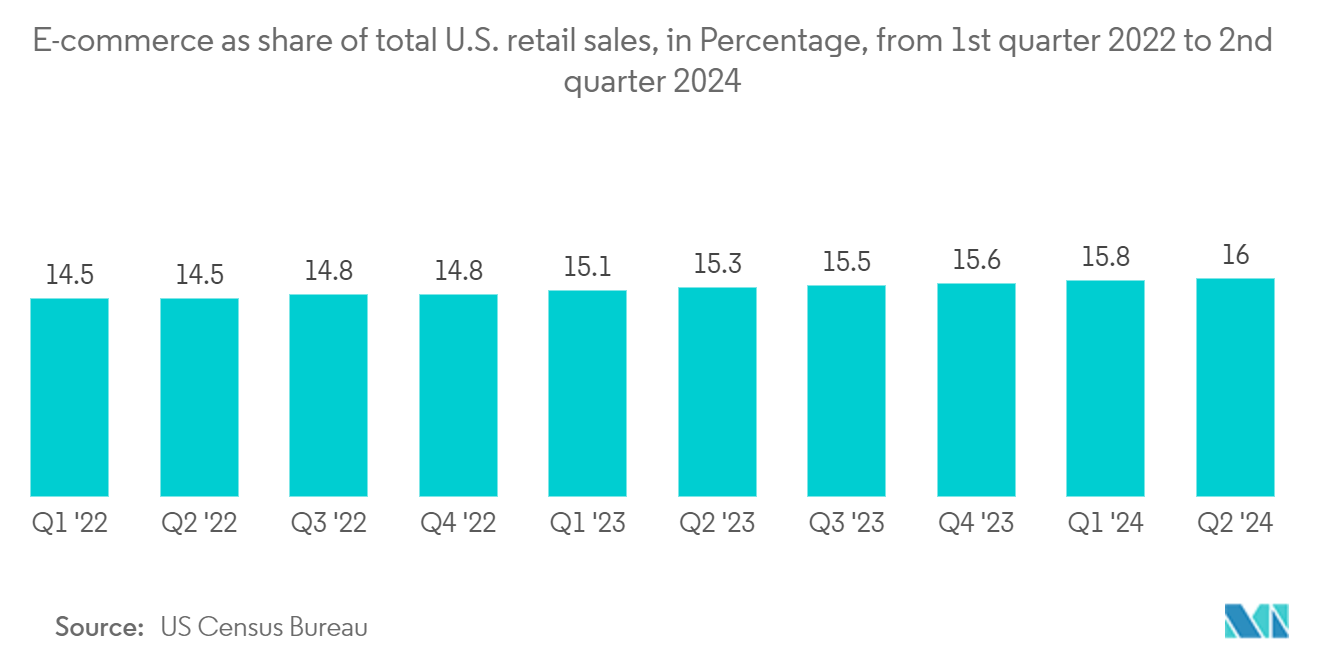Market Trends of North America Payment Gateway Industry
Increasing Use of Payment Gateway in Large Enterprises
- In North America, large enterprises are increasingly adopting payment gateways. This shift is driven by rapid business digitization, a boom in e-commerce, and an urgent demand for secure, scalable payment solutions. Due to their size, these enterprises require payment gateways that are not just robust but also rich in features. Such capabilities allow them to manage high transaction volumes, maintain stringent security, and support diverse payment methods.
- Large enterprises face heightened risks of cyberattacks and data breaches due to their vast customer bases and significant transaction volumes. Consequently, there is a pronounced focus on payment security, elevating the necessity of payment gateways equipped with advanced security features. Essential features like encryption, tokenization, and fraud detection play a pivotal role in safeguarding sensitive payment information.
- Further, many large enterprises from North America have expanded their businesses in foreign companies. According to the data published by the World Bank, the share of digital remittances leaving the United States was higher in 2024 than in previous years, taking up the majority of money transfers. This is according to a custom-made calculation based on the number of reported remittance channels leaving the United States. Such growing demand for digital payments has driven the adoption of payment gateways.
- Moreover, payment gateways are evolving, harnessing AI and automation to bolster payment processing and security. For large enterprises, this evolution translates to quicker and more precise transaction processing, automated fraud detection, and tailored payment experiences for their customers. With AI-driven analytics, payment gateways empower enterprises to identify suspicious activities in real time, significantly reducing fraud risks.

United States to Hold Significant Growth
- The United States has witnessed a notable rise in the adoption of payment gateways in recent years. This surge is attributed to changing consumer preferences, the growing e-commerce sector, technological advancements, and a heightened demand for secure online payment solutions. With both businesses and consumers increasingly leaning towards digital transactions, payment gateways have cemented their status as vital players in the US economy, ensuring transactions are seamless, secure, and instantaneous.
- Also, in the United States, consumers increasingly demand diverse payment options for online shopping. Although traditional credit and debit cards continue to dominate, alternative payment methods, including buy-now-pay-later (BNPL) services and cryptocurrencies, are rapidly gaining popularity. Payment gateways are adapting to meet these evolving preferences, enabling businesses to integrate multiple payment methods seamlessly into their checkout processes. This adaptability broadens the merchant's customer base and enhances conversion rates.
- Further, as per the report by the US Census Bureau, in the second quarter of 2024, the share of e-commerce in total US retail sales stood at 16 percent, up from the previous quarter. From April to June 2024, retail e-commerce sales in the United States hit over USD 291 billion, the highest quarterly revenue in history. Such growth in payments in the United States represents the growing demand for a payment gateway in the country.
- Also, as per the report by the US Census Bureau, in Q2 2024, e-commerce accounted for 16% of total US retail sales, marking an increase from the prior quarter. Between April and June 2024, US retail e-commerce sales surpassed USD 291 billion, achieving the highest quarterly revenue on record. Such growing consumer inclination toward e-commerce is driving the demand for payment gateways in the United States.
- Moreover, in the United States, the adoption of subscription-based models across various industries, such as media, entertainment, SaaS (Software as a Service), and retail, has significantly fueled the growth of payment gateways. These gateways empower businesses to seamlessly handle recurring payments, oversee subscriptions, and securely store payment details, thereby minimizing the chances of transaction failures and customer churn.


